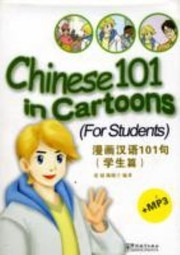学做中国菜.汤菜类:汉英对照 Soup: Learn to Cook Chinese Dishes (Chinese/English edition)

Buy online ($)
Type
Book
Authors
ISBN 10
7119024930
ISBN 13
9787119024936
Category
Teknologi
[ Browse Items ]
Publication Year
1999
Publisher
外文出版社, China
Pages
90
Subject
汤菜类——烹饪——中国——汉,英
Tags
Description
You don't have to take classes from a professional teacher to learn the art of Chinese cooking if all you want to do is to entertain your friends or cook for your family. Almost without exception, Chinese women learn this skill by watching and working together with their mothers or grandmothers. After they become wives or mothers themselves, the most diligent will try to improve their techniques by consulting cook books and exchanging experiences with their neighbors. In this way they eventually become as skilled as the best chefs in established restaurants. It should be noted, of course, that most of the well-known chefs in famous restaurants are men, because many men in Chinese homes are just as good at the art of cooking as their wives. This book in the Learn to Cook Chinese Dishes series has been compiled by master chefs. They have used simple explanations to introduce the ingredients, the ways of cutting, and the cooking procedures for each Chinese recipe. Readers, who follow the directions, will before long become skilled in the art of Chinese cooking. The entire set consists of ten volumes, covering freshwater and seafood dishes, meat dishes, vegetable dishes, courses made from soy beans, soups, cold dishes, pastries, dishes of eggs and poultry, food carving techniques, and recipes for special feasts. This volume presents forty-two different soup dishes. Soups, indispensable for any authentic Chinese meal, consist of two categories: one is "fresh soups," watery mixtures in the sense of "primary products" that have been prepared for use in cooking a variety of dishes. The other category is soups to be served as soon as they are prepared. The ingredients for making both kinds of soups are many, ranging from various types of poultry, meat, fish, shrimps and shelled fish to all kinds of vegetables including bamboo shoots, mushrooms, pickled vegetables, bean sprouts and radishes. Different raw materials are selected according to the taste of the diner, but all of them must be fresh and finely prepared. The right proportion between the raw materials and water must be ensured. Too many of the raw materials and too little water will make the soup thick and greasy. The opposite will cause the soup to become thin and tasteless. Fire is equally important. In making a soup dish, a medium fire will have the best effect when the fat and protein in fish and meat are to be totally dissolved in water, turning the soup into a milky white color with a wonderful taste. For thick soups, a strong fire is necessary so that the water will boil first. Then the fire should be turned down to medium. And when the soup thickens, a strong fire again is required. For clear soups, a low fire is required to let the water simmer. If the water boils violently, the soup will not be clear. The amount of water, salt, scallions, ginger, soy sauce, cooking wine and pepper and the timing for putting in the ingredients will result in subtle variations in the taste of the soup. Ideally, when the raw materials are put into a pot, adequate amount of cold water should go in also. During cooking, no more water should be added. If there is not enough salt in the soup, no matter how many raw materials there are, the soup will not be tasty. But to add the salt before the soup reaches the boiling point will not produce tasty soup either... All pages of the book are spiral bound and double coated for easy clean-up of any spills. Color Illustrations - from Amzon
Number of Copies
1
| Library | Accession No | Call No | Copy No | Edition | Location | Availability |
|---|---|---|---|---|---|---|
| Main | 3964 | 641.593 1/xue | 1 | Yes |



